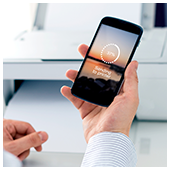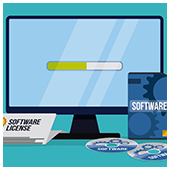Despite today’s paperless business environment, every now and then there comes a time when you just have to use a printer. And since many businesses have embraced cloud computing, why not combine the cloud with regular printers? Will these devices enjoy the same benefits that cloud computing businesses enjoy? Find out more about Google’s Cloud […]
 Despite today’s paperless business environment, every now and then there comes a time when you just have to use a printer. And since many businesses have embraced cloud computing, why not combine the cloud with regular printers? Will these devices enjoy the same benefits that cloud computing businesses enjoy? Find out more about Google’s Cloud Print service.
Despite today’s paperless business environment, every now and then there comes a time when you just have to use a printer. And since many businesses have embraced cloud computing, why not combine the cloud with regular printers? Will these devices enjoy the same benefits that cloud computing businesses enjoy? Find out more about Google’s Cloud Print service.
First things first, the printer needs to be connected to your primary computer (the one you’ll use to access the printer in the future). Once connected, the computer can be added to Cloud Print. If it isn’t already installed, you need to install Chrome for Windows or Mac. From there, type chrome://devices into the address bar to bring up devices Chrome can work with. Click “Add printer” and make sure the printer you want to link is ticked.
From the same screen, you’ll be able to configure printer settings. Click Manage next to any of the listed printers to upload new print jobs, rename or remove printers, or share a printer with someone else. This allows you to give certain people access to your printer.
If you need to print something off your mobile device, you can do so with the Cloud Print app on Android, where a print option should appear in the Sharing menu. It’s slightly trickier on iOS, but you can still cloud print from Google’s iOS apps using the Google-recommended file management, transfer and printing application PrintCentral Pro to bridge the gap. And as expected, Cloud Print works seamlessly with Chromebooks as well. Just choose Print from the main menu and voila!
If you’re interested in hearing more news on Google’s Cloud Print function or staying up-to-date on the IT world, feel free to let us know.

 When you have a great idea, it’s natural for you to want to share it with others. Technology, however, works at a different wavelength. Before you put your software out there, you want to make sure you've got all your bases covered. Keep reading to learn the vital considerations you need to address before jumping to sell a new hardware.
When you have a great idea, it’s natural for you to want to share it with others. Technology, however, works at a different wavelength. Before you put your software out there, you want to make sure you've got all your bases covered. Keep reading to learn the vital considerations you need to address before jumping to sell a new hardware. Buying a computer for a small business seems like a simple task. You work from a budget, go to a store, buy the computer, and assemble the components. This would be true for small businesses from decades past, but times have dramatically changed. To keep up, small businesses must make smart decisions when it comes to purchasing computers. Whether your main consideration is software compatibility, availability, or even battery life, here are some of the things you need to consider when choosing computers for your small business.
Buying a computer for a small business seems like a simple task. You work from a budget, go to a store, buy the computer, and assemble the components. This would be true for small businesses from decades past, but times have dramatically changed. To keep up, small businesses must make smart decisions when it comes to purchasing computers. Whether your main consideration is software compatibility, availability, or even battery life, here are some of the things you need to consider when choosing computers for your small business.
 The owner of a small business has enough to worry about without adding online security to the mix. But with the proliferation of smart devices that come in everything from Fit Bits to smoke alarms, hackers are now able to access sensitive information. Read on to find out about the “Internet of Things” (IoT) scanner that can keep your business away from the hacker's radar.
The owner of a small business has enough to worry about without adding online security to the mix. But with the proliferation of smart devices that come in everything from Fit Bits to smoke alarms, hackers are now able to access sensitive information. Read on to find out about the “Internet of Things” (IoT) scanner that can keep your business away from the hacker's radar.